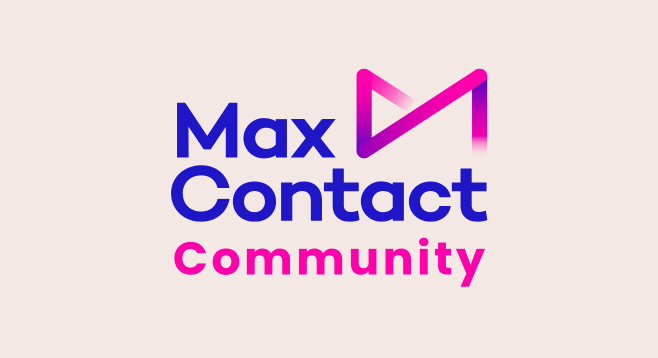Public sector contact centres are on the cusp of a digital revolution, aiming to streamline processes, personalise interactions, and delight customers with efficient and user-friendly experiences. However, embarking on this journey often comes with budgetary limitations. While long-term digital goals are crucial, the needs of your contact centre can’t wait. In this blog post, we’ll explore practical strategies to bridge the gap between your current state and digital goals.
Public Sector Budgets & ROI for 2024
The local government finance settlement for 2024-25 makes £64.7 billion available for local government, a 7.5% increase. The Government promises £4.2 billion in funding in 2024, allowing UK public services to invest in new technologies like AI and replace outdated IT systems. However, a study by the Department for Levelling Up Housing and Communities showed that councils dedicate only around 15% of their digital budgets to transformation initiatives, with legacy system maintenance consuming resources.
The study also revealed good progress towards digital transformation, with nearly three-quarters of responding councils having an identified technology leader and over half having a published digital strategy. However, budget pressures can hinder upgrading legacy systems, which are often less secure and efficient than modern varieties. On average, 15% of councils’ digital budgets are spent maintaining legacy technology, a figure that should ideally be reduced to zero.
Despite these challenges, studies suggest significant potential for cost savings and improved efficiency through digital tools, with examples of over £41 million in direct savings showcased by the Local Government Association. The public also benefits from faster, more convenient services, while improved data management informs better decision-making. The pandemic accelerated progress by an estimated five years, suggesting some projects can be completed relatively quickly.
Assessing Your Current Landscape
Before tackling solutions, assess your current landscape to prioritise the most impactful initiatives:
• What are the biggest pain points for your customer-facing teams and customers?
• Are there recurring issues with call handling, call waiting, self-service, or team training?
• Envision your ideal state and how technology could empower your team to deliver excellent service.
Practical Interim Solutions
- Migrate to a cloud-based contact centre platform for more flexibility, control over costs, and regular enhancements. Bring all customer interactions into one platform for easier, more efficient management.
- Consider workforce management and optimisation tools for automated scheduling, performance tracking, and skills-based routing. Ensure you have the right team with the right skills to handle calls at the right times to improve efficiency and decrease wait times.
- Refine your IVR menus and route calls automatically to the best people. Explore natural language processing for smarter call routing. A well-designed IVR empowers customers to self-serve while reducing the burden on your agents.
- Create digital self-service opportunities, like a robust knowledge base accessible to agents and the public. Build out FAQs, guides, and resources. When agents can quickly find answers and customers can easily help themselves, everyone benefits.
- Use AI-driven insights from tools like speech analytics to coach and develop your team. Invest in targeted training to address skill gaps. Motivated, well-equipped agents are the backbone of great public service.
- Implement omnichannel communication, allowing customers to interact via webchat, email, or social media for increased convenience and satisfaction.
- Utilise SMS or email notifications to keep customers informed about appointments, application statuses, or service updates, demonstrating transparency and enhancing the customer experience.
- Gather customer feedback after every interaction through post-call surveys or email feedback forms. Analyse this feedback to identify areas for improvement and contribute to your long-term digital transformation strategy.
How MaxContact has helped Dudley Council streamline their rental income collection process and improve community service:
Remember the Big Picture
As you implement interim solutions, view them as stepping stones in your larger transformation journey. Define clear metrics to measure success, develop a change management plan to support adoption, and consistently analyse data to surface ongoing improvement opportunities.
Maximise the impact of interim solutions by focusing on measurable outcomes, implementing a change management strategy for smooth adoption, and leveraging data analytics for continuous improvement. These insights can inform both your current operations and your long-term digital transformation goals.
The path to digital transformation is challenging, but with pragmatic strategies, public sector contact centres can make strides even with constrained budgets. By focusing on cloud migration, workforce optimisation, self-service enhancements, agent empowerment, omnichannel communication, and data-driven continuous improvement, you can bridge the digital gap and lay a strong foundation for the future. Embrace the journey and celebrate each milestone – your team and the public will thank you.
Find out more about how MaxContact can transform your public sector contact centre.
Sources:
https://dluhcdigital.blog.gov.uk/2023/09/28/local-digital-evaluation-study-a-snapshot-of-our-initial-findings/
https://www.local.gov.uk/digital-transformation-programme
https://www.virginmediabusiness.co.uk/revolutionise-the-everyday/local-authorities/
The public sector contact centre industry faces unique challenges in delivering high-quality customer service to the general public while managing tight budgets and dated technology. Here, we highlight several key themes and pain points impacting customer experience in 2024 across local governments in the UK.
Key Challenge #1: Slow Adoption of Digital Channels
One striking finding is the public sector’s low adoption of digital service channels compared to other industries. A recent report states:
“The public sector has some of the lowest take-up of digital channels of any sector, and telephony accounted for more than 80% of inbound interactions in 2018. However, 2020 onwards has seen a major increase in the use of telephony self-service, but this may be due to a drop in live telephony performance in the sector.”
While the central government has pushed for “digital-first” public services, progress has been slow. Public sector contact centres still rely heavily on phone interactions. Depending on the nature of the interaction, transitioning more people to digital self-service, when done well, can reduce costs while still providing easy access to services.
To boost digital adoption, public sector organisations should:
• Ensure digital services are well-designed, easy to use, and accessible to everyone, including the elderly and underserved populations. Define the digital channels’ purpose and then build relevant, helpful content for your contact centre team and the customer-facing assets. Providing excellent support for digital channels will help build trust and confidence.
• Heavily promote digital options and educate people on how to use them.
• Provide easy access to phone service for complex issues or people who require it—don’t try to reduce demand by hiding this option. It only leads to dissatisfaction when people need it the most.
Key Challenge #2: Outdated Technology
Public sector contact centres tend to lag in implementing newer technologies like AI, analytics, and automation.
“The public sector is generally slow to implement new technology, and the relatively small size of many operations also means that it is behind the technology curve, particularly for newer technology such as AI, analytics and email management, as well as outbound-focused technology such as automated outbound diallers.”
Legacy systems can negatively impact public sector contact centre teams’ customer experience and operational efficiency. Modernising the contact centre technology stack is crucial for handling interactions across channels seamlessly and extracting valuable insights from data across the public sector.
Some strategies to address outdated technology:
• Explore cloud contact centre platforms to reduce reliance on legacy infrastructure – which have feature limitations and lack integration options
• Consider point solutions, like outbound dialler technology – they help organisations to increase efficiency without the need to invest in long and complex digital transformation projects.
• Implement AI and automation in phases, starting with simpler use cases like AI-driven chatbots, web chat, and quality-of-life features that make communicating with customers more efficient.
Key Challenge #3: Worsening Speed to Answer
The general public’s expectations for fast service continue to rise, but public sector contact centres struggle to keep up. The report highlights a concerning trend:
“Public sector contact centres have usually seen a higher-than-average speed to answer, which has hugely risen since 2019 and is a concern. Some central government contact centres are under severe pressure to improve their performance, while local government operations will tend to have performance under better control, although their budgets are getting tighter, and they are forced to do more with less.”
Long wait times lead to frustration and more work for agents handling escalated complaints. Improving speed to answer requires a multi-pronged approach.
Tactics to try:
- Implement skills-based routing to match consumers’ requests with the best-equipped agent faster
- Expand self-service options for common requests to reduce live handle time; using tools like speech analytics helps operational leaders understand call drivers more accurately and shifts in conversation trends
- Explore callback technology to give people alternatives to waiting on hold
- Leverage workforce management tools to optimise scheduling and improve forecasting
Key Challenge #4: High Absence and Attrition
Agent engagement appears to be an emerging issue in public sector contact centres. Studies reveal:
“From 2017 until 2021, public sector agent absence rates were below the contact centre industry average. However, the high absence rate in 2022 and 2023 – in line with the jump in attrition and declining performance – is potentially cause for concern.”
Agents are the heart of the contact centre and directly impact customer satisfaction. High absenteeism and turnover disrupt operations and lead to inconsistent service levels as new agents are onboarded.
Some ways to combat absence and attrition:
- Invest in agent training and coaching to build confidence and competence
- Implement gamification to make work more engaging and rewarding
- Gather agent feedback regularly and take tangible actions to address pain points
- Provide clear career paths and opportunities for advancement
Key Challenge #5: Increasing Complexity and Cost to Serve
As people expect personalised, omnichannel service, interactions are becoming more complex for public sector contact centres to handle efficiently at scale. At the same time, budgets remain tight.
“Pent-up demand for phone service will continue to oppose the severe budget-cutting targets that exist at both central and local government levels, which are likely to cancel each other out to a great extent, leading to longer wait times and a greater likelihood of outsourcing, as little budget is available for growing the contact centre figures,” explains the report.
Organisations must find ways to do more with less, leveraging technology, data, and process improvements to reduce handle times and improve first-contact resolution.
Consider these strategies:
- Map customer journeys to identify and eliminate points of friction and unnecessary transfers
- Unify customer data across channels for a full view of interactions and context
- Analyse interaction data to surface opportunities for process improvement
- Implement knowledge management and AI tools to surface relevant information to agents quickly
How MaxContact has helped Dudley Council streamline their rental income collection process and improve community service:
In conclusion, while public sector contact centres face daunting challenges, a strategic approach incorporating new technology, enhanced self-service, and a continued focus on agent experience can help overcome these hurdles. By making steady improvements across channels, technology, and operations, organisations can elevate the quality and efficiency of customer service while effectively managing costs.
With the right strategy and investments, public sector contact centres can deliver the convenient, personalised interactions customers increasingly expect, reinforcing trust in public institutions. While not an overnight transformation, public sector leaders who commit to ongoing contact centre advancement can achieve meaningful progress in 2024 and beyond.
Find out more about how MaxContact can transform your public sector contact centre.
Source: Research public sector stats and quotes – “UK Contact Centre Verticals: Public Sector” (ContactBabel)



